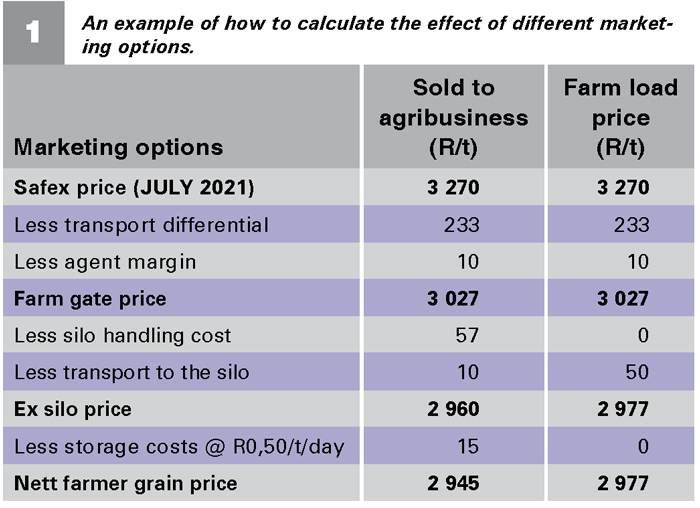March 2021
| Pietman Botha, Pula Imvula contributor. Send an email to pietmanbotha@gmail.com |  |
Grain and oilseed prices are widely distributed to all grain and oilseed producers, who also receive other prices like a farm gate price and the ex-silo prices. It is important to understand these prices and know the difference between them and also to be able to calculate the price you will receive for your grain.
The first price that is distributed on a daily basis is the Safex maize or commodity price for different delivery months. Normally the current month is the daily market price. The future market delivery months, for example May July December, will be future prices.
The second set of prices is the farm gate price. This price is the price that producers will receive for their product on the farm. The third set of prices is the ex-silo price. The ex-silo price is the price for the grain in the silo. Contractually producers will normally receive the ex-silo price. There is a big difference between the Safex and the ex-silo price; and the money in the bank.
SAFEX PRICE
The Safex price is the market price for grain delivered in Randfontein. This is the market price for the commodity that includes the demand and supply as well as the expected demand and supply of the commodity.
Since the South African grain market can import or export grain, the international demand and supply of the commodity as well as the exchange rate of the currencies will also be included in the South African commodity Safex prices.
The highest or lowest boundaries of the commodity prices is the import parity and export parity prices. Since the Safex price is a free market price for a commodity delivered in Randfontein it is used as the basis to determine the farm gate price.
Normally from this Safex price the transport differential and the margin for the broker will be deducted to result in the farm gate price for the grain. If this grain is delivered to the silo there will be other handling and transport costs that will be deducted.
Marketing options
Producers can expect to pay for the different agribusinesses loading and unloading cost that differ from business to business. Producers can also expect to pay daily storage costs for the grain. These costs will differ between businesses and producers must make sure they know and understand these costs.
Some agribusinesses will charge a daily cost up to a certain point and then there will be a yearly cost. Make sure that the grain is kept as short as possible on the daily storage. Transfer it to contracts as soon as possible.
Table 1 is an example of how to calculate your own price and to be able to compare different prices.
By using Table 1 as an example, farmers can evaluate different marketing options. Producers must get hold of the information for their area and compare the different options.


Publication: March 2021
Section: Pula/Imvula